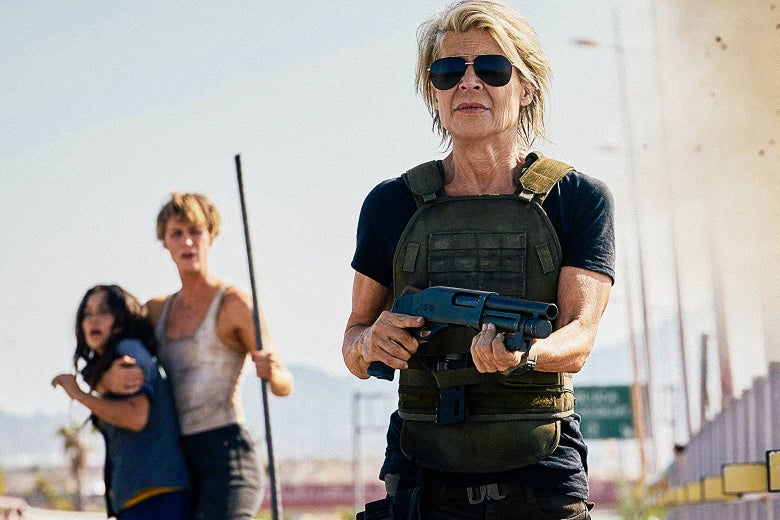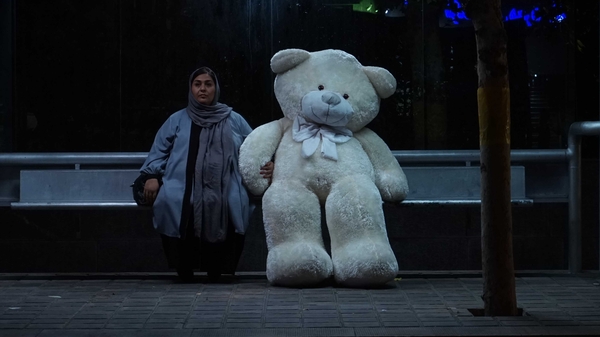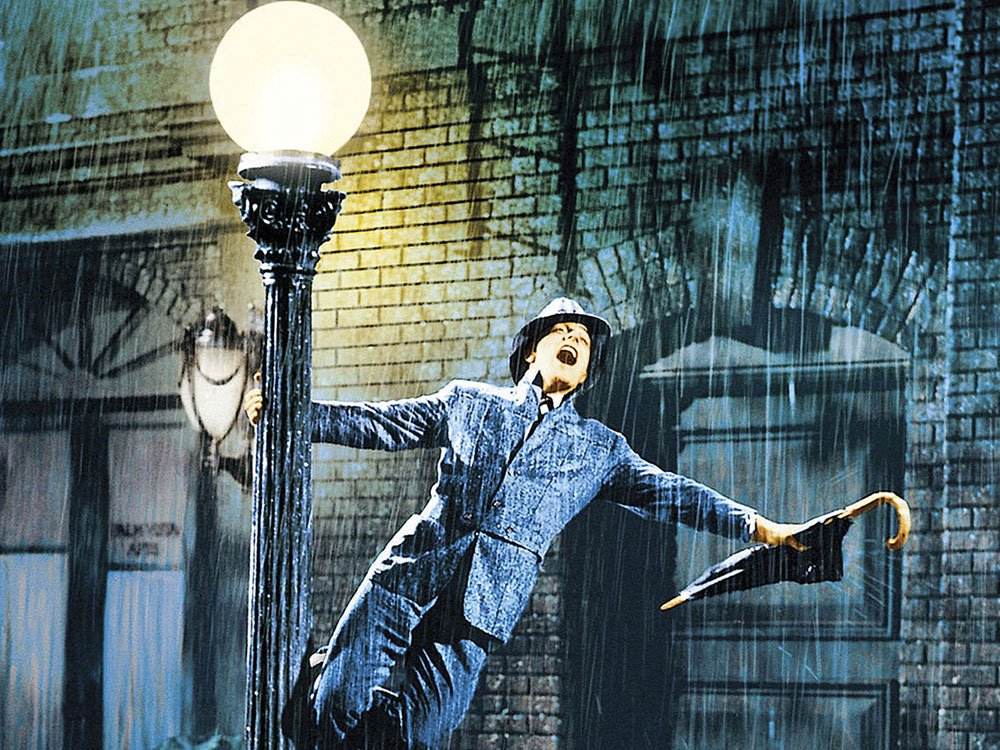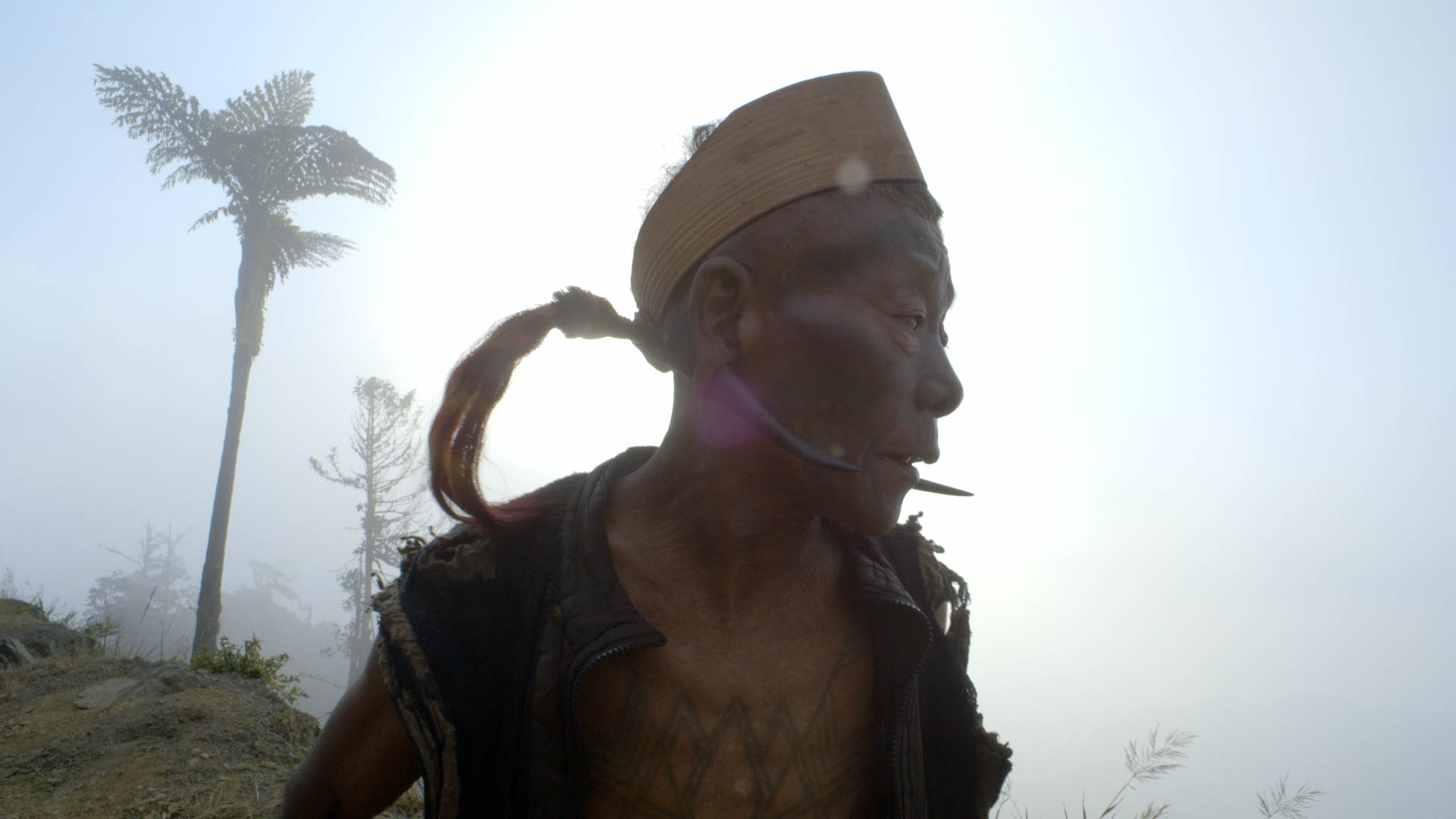As overseen by the emergent visionary James Cameron - like him or not, one of the half-dozen most significant filmmakers to debut in the final quarter of the 20th century - 1984's The Terminator and 1991's Terminator 2: Judgment Day were forward-facing sci-fi landmarks, as engaged in their own way with determining the future of the cinema (not least in their facility with increasingly elaborate digital effects) as their plots were with the future of mankind. The once-promising Jonathan Mostow (Breakdown) gave 2003's Terminator 3: Rise of the Machines an expensive B-movie heft (and raised the enduring idea of a lady Terminator, combining the strengths of the characters played in the first movies by Arnold Schwarzenegger and Linda Hamilton); yet subsequent sequels - 2009's noisy Terminator: Salvation and 2015's needless Terminator: Genisys, directed by whoever happened to be passing - served no greater purpose than spinning wheels, the movie equivalents of the cursor on a Mac indicating some glitch or internal system error.
This week's Terminator: Dark Fate looks decisively back to where this series began, taking a casting cue from the recent Jurassic Park and Halloween reboots in reuniting the series' most memorable players. Its trailer made much of a scene that brings Hamilton's Sarah Connor face-to-face once again with Schwarzenegger's hulking Eurobot, the merciless killer of the first movie rewired to serve as a protector in the second, and a prologue in the new film explains why the pair have kept a wary distance in the intervening years. (Clue: it isn't pretty.) Yet this reunion proves but a very thin sliver of what is, on the whole, a pretty thin two-hour runaround. Returning to first principals [sic], in this instance, hasn't given the series' underlying mythology any greater heft; it merely generates yet more flimsy, studio-funded fan fiction, a retreat offered up in the absence of any better or more original ideas. The rise of the machines Cameron's movies warned us about turns out to have been sponsored by Xerox.
Behind the multiple writing credits, there remain traces of a compelling pitch - the kind of brainwave that might well get a sixth Terminator film into production after the conspicuous underperformance of entries four and five. That pitch would be Mr. and Mrs. Terminator: mirrored, mixed-gender pairs shooting, pitting next-gen robots - "enhanced" (i.e. conscientious) Mackenzie Davis and kill-crazy Gabriel Luna - against one another and seasoned franchise survivors Linda and Arnie. The trouble, as so often once the budget drifts north of a certain figure, is indifferent story development. Anonymous stretches of South America provide incoming director Tim Miller with a relatively fresh backdrop, but elsewhere he keeps falling back on the familiar: recycled music cues, lines that throwback to or chime with what's gone before ("I won't be back"), metallurgic CGI that proves far less striking than it was back in 1991.
Repeated exposure has revealed the Terminators themselves to be humdrum, nuts-and-boltsy antagonists, essentially ambulant variations on the personality-free gadgets in the Bright Ideas catalogue: it took an uncanny screen presence such as Arnie or Robert Patrick to flesh them out and make them any more interesting to watch than, say, an especially rebellious trouser press. (Luna is too bland.) The ruthlessness of the Cameron-era Terminators - in many ways their most admirable attribute, as their scarcely less ruthless creator understood - has long since ebbed away: Dark Fate racks up a lot of discreet, just-off-camera carnage, allowing the kind of bystanders Arnie made mincemeat of in the original to walk away unscathed. Perhaps we forget the first movie was a nasty slice of 18-rated exploitation welded together by the mad genius behind Piranha II: Flying Killers; as early on as the gleaming, mega-budgeted Judgment Day, the franchise was looking for mass acceptance in those multiplexes which now have to keep their lights on during films for health-and-safety reasons.
There are one or two elements we might still root for. A potentially great actress - something like a steelier Brie Larson - who's had lousy luck with her career choices, Davis gives the action more backbone than it might otherwise have; she's a notable upgrade on the decorous Kristanna Loken of T3. And Hamilton - appreciably lined and lived-in, with a smoker's growl that lends much-needed character to terribly so-so dialogue - really does look as if she's spent the best part of the past 35 years fending off killer robots. Yet the film that's been thrown up around her doesn't possess the wisdom or the dramatic tools to give weight to Sarah Connor's ongoing trauma. Instead, Miller - arriving here after launching Fox's snarky Deadpool franchise - keeps succumbing to a glibness that is the mark of so much of our bigger-budgeted audiovisual content; he's well aware this particular history can and will be rewritten in Terminators VII-through-IX, so in some way none of it really matters.
When asked what she's doing here, Davis's best response is "future shit"; a detour through a roomy border detention centre feels terribly opportunistic, verging on the suspect; by the time Davis is confessing "some man killed my dad over a tin of peaches" and Arnie is lumbering on to share interior decoration tips, we seem to be bordering on the parodic. The crisis facing Hollywood right now is that half of its directors (the Nolan-Snyder-Phillips faction) are taking their pulp way too seriously; the other half are incapable of taking anything seriously at all. Miller, for his part, presides with a dull competence over what feels like a near-final dismantling of the Terminator mythos: if Judgment Day launched the modern event movie, then Dark Fate is no more of an event than taking a cursory nose around a breakers' yard to see what one might get on the cheap. This franchise was once central to the operation of the movie summer season; it seems telling its latest venture should limp out into the greys of October, to be trounced at the box-office by a cruddy Batman spin-off.
Terminator: Dark Fate is now playing in cinemas nationwide.









